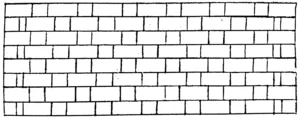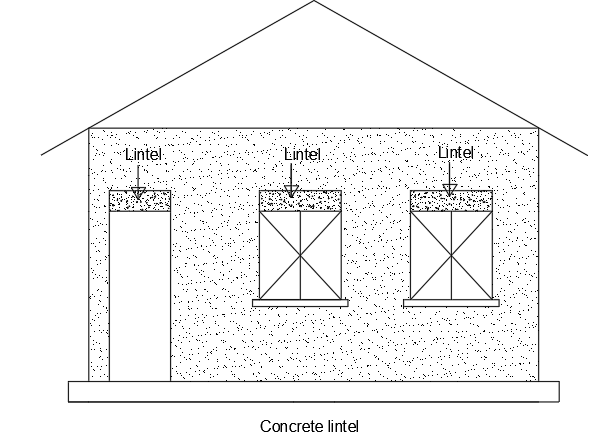Bonding In Construction
Bonding in construction is the term given to the various recognized arrangements of brickwork in walling. it is applied in order to prevent structural failure in case of loading, therefore, the loading must be distributed evenly throughout the length of the wall, so that each part of the wall carries a small amount of the load. if the load is not evenly distributed then this may cause uneven settlement and cracking.
Why do we bond bricks/blocks and other masonry units?
Advantages of bonding in construction works.
- To maintain the greatest possible strength in walling.
- To bear the loads and distribute them evenly throughout the wall/structural stability.
- To achieve a nice appearance on the wall e.g., decorative pointing and jointing/aesthetics.
- Proper bonding helps prevent moisture penetration and improves the ability of the wall to withstand weathering/weather resistance.
- Bonding helps to create a tighter seal between the bricks, reducing the amount of air infiltration and improving insulation properties/better insulation.
Types of bonding in construction.
There could be more other possible bonding in construction arrangements, but the following are some of the common ones in general use, stretcher bond, header bond, Flemish bond, English bond, Dutch bond, English Garden wall bond, Flemish Garden wall bond, monk bond, rat-trap bond and miscellaneous bond.
Stretcher bonding.
The stretcher bond consists of all the bricks laid as stretcher on every course within the courses laid half bonded to each other and half bat is introduced at stopped end. it is usually used in walls of half brick in thickness. Stretcher bond is the simplest and most common brickwork bonding pattern and is widely used in construction because it is easy to lay and requires fewer bricks than other more complex patterns. It is also suitable for walls that are only one brick thick, it requires minimal cutting.


Header bonding.
This is satisfactory for walls of one brick thick and consists of all bricks laid in headers, with the bond being formed by three quarter bat 3/4 at the quoin. it is commonly used in footing courses or walls curved on plan. In header bond, the bricks are laid in stretcher courses (long sides facing outwards) with alternate courses consisting entirely of headers. This creates a series of vertical columns of headers that provide strength and stability to the wall, one of the main advantages of header bond is that it is a simple and easy-to-lay pattern that requires minimal cutting of bricks. This makes it a cost-effective and efficient bonding pattern for many types of brickwork construction.

English bonding.
The English bond consists of alternate course of header and stretchers, with a closer placed next to the quoin header to form the laps. however occasionally a three-quarter bat is used at the start of each stretcher course when the closer is not used. the above kind of instructions can be given at site. One of the main advantages of English bond is its strength and stability. The alternating courses of headers and stretchers create a strong interlocking pattern that helps to distribute the weight of the wall evenly and provides resistance to lateral forces such as wind and earthquakes. Another advantage of English bond is its aesthetic appeal. The alternating pattern of headers and stretchers creates a visually appealing design that is often used for decorative purposes in brickwork construction.


Flemish bonding.
Flemish bond consists of alternate headers and stretchers, with the header in one course being placed centrally over the stretcher as shown in the courses below. A closer is placed next to the quoin header to form 1/4 lap. One of the main advantages of Flemish bond is its strength and stability. The alternating pattern of headers and stretchers creates a strong interlocking structure that helps to distribute the weight of the wall evenly and provides resistance to lateral forces such as wind and earthquakes. However, Flemish bond is more complex and time-consuming to lay than other bonding patterns such as stretcher bond or header bond. It also requires more bricks, making it more expensive to construct.



English Garden Wall/Sussex Bond.
This type of bond consists of three or sometimes five courses of stretcher to one of headers, the stretcher courses being laid half-bod to each other, this bond sometimes is called Sussex bond. The advantage of the English garden wall bond is that it provides a strong and stable structure that is suitable for low-rise structures, such as garden walls and other decorative structures, while also adding an aesthetic appeal to the structure
Flemish Garden Wall Bond.
This is a rare type of bonding in construction, it consists of three to five stretchers to one header in each course.
Monk Bond.
This type of bonding in construction consists of two stretchers to one header in each course and the header is laid centrally over the joint between two stretchers in the course below. this bond also gives a pleasant appearance especially when colored mortar is being used.
Rat-Trap Bond.
This is another type of bonding in construction, it is used where strength is not of a vital importance because this is a brick on edge bond with the middle of the wall being half left hollow. it is used for garden walls.
Miscellaneous Bond.
Yet another type of bonding in construction, it is a bond is formed to suit the individual requirements of the designer. sometimes they may be standard bond with colored bricks or projecting headers being introduced to form patterns. there is an infinite variety of these bonds, and they are interesting to use.
Try take these quizzes.




